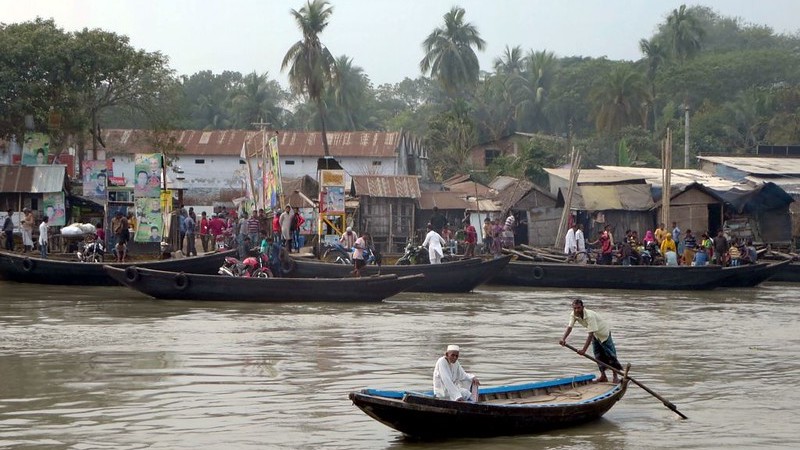International financial institutions from across the world have come together to propose a framework for metrics that will promote a more climate-resilient development system.
A paper, jointly researched by seven multi-lateral development banks (MDBs) and members from the International Development Finance Club (IDFC), outlines principles for assessing the contribution of development finance to climate change resilience.
To match the challenges that a changing climate brings, adaptation on a number of levels needs to be considered. Correctly using measurements and metrics are key to assessing how and which financing activities best contribute to climate resilience.
A Framework and Principles for Climate Resilience Metrics in Financing Operations has been developed in response to the 2015 Paris Agreement, which called for climate resilient development to be considered within financial flows. The agreement also set out a global goal on adaptation to fundamentally reduce vulnerability to climate change.
Underpinning the framework are four principles. They call for:
- a context-specific approach and a consideration of the varied circumstances each individual project may encompass
- compatibility with long timescales in projects and the potential for unexpected delays
- an explicit understanding of the inherent uncertainties of climate change due to unpredictable and variable future inevitabilities
- the ability to determine and cope with the boundaries of climate resilient projects and the indirect impacts a project may have on wider elements
Structured on a results chain model, a process where the result of one activity impacts the following activity, the framework covers the quality of a project design, as well as the project results in the long term. It is a flexible system which accommodates a broad range of climate resilient activities and provides consistency across existing metric systems.

The framework has been developed predominantly through the gathering and analysis of climate resilience metrics, that have been applied in previous or ongoing projects, by development banks and institutions worldwide. The Inter-American Development Bank are working on some projects now which incorporate metrics, including the Disaster and Climate Change Risk Assessment Methodology. You can read CHN’s report on this here. Below are a few more examples from global development banks.
MDB/IDFC Education System Upgrade
MDBs and some IDFC members have been reporting on climate finance on a yearly basis. In particular for Adaptation Financing (AF), they have adopted the Climate Change Adaptation Finance Tracking methodology. The approach focused on reporting on metrics related to adaptation financing for projects committed to addressing climate vulnerability and resilience.
For example, a 2018 education sector project applied an input level metric in its design stage to report on its climate resilience finance flows. Input level metrics refer to reporting on the financial, human, and material resources committed to projects looking to integrate climate resilience.
The project aims to improve the effectiveness of a secondary education system in a client country, with a total project cost of $2 billion. Incorporated into this figure is an estimated cost of $25.3 million for climate adaptation measures – activities include elevating awareness of climate change in the curriculum, and operational procedures to improve schooling infrastructure.
ADB Coastal Towns Environmental Infrastructure Project
In 2014, the Asian Development Bank (ADB) began working on a project to strengthen climate resilience in a number of towns sitting on the coast of Bangladesh.
These areas were selected due to extreme vulnerability to coastal flooding and limited access to cyclone shelters, amongst other factors.
The project used climate resilience output indicators. This included a performance-based allocation approach, where individual towns were able to access higher stages of investment if they managed to fulfil certain criteria at the asset level. Therefore, output metrics relating to, for example, the strengthening of governance processes or the improvement of climate resilient infrastructure, was closely considered throughout the project.
EBRD Road Improvement Project
The European Bank for Reconstruction and Development (EBRD) is working on a road improvement project in a southeastern European nation, to confront climate related transport disruptions from events such as floods and landslides.
Their approach to applying climate resilience metrics comes in the form of reporting on benefits at the outcome level.
They estimate that they will avoid 2.3 days per year of road network disruption and an increased road lifespan of 5 years in comparison to the roads’ pre-project baseline. This outcome-level metric approach is important for engaging with private sector clients and reporting on the economic benefits of a climate resilience project.

Next steps…
Climate resilience metrics help document adaptational efforts and identify successes in financing flows.
MDBs and IDFC members will continue to develop individual metric systems with a focus on institution-specific approaches. However, the framework now established can be used as a common language on which to build.
According to the Global Commission on Adaptation, investing US$1.8 trillion in climate resilient activity between 2020 and 2030 will generate US$7.1 trillion in net benefits. Actions on climate adaptation help to avoid losses (physical and economical), and welcome social and environmental benefits.
Therefore, the report comes at a critical time when funds and resources must be mobilized to meet the growing challenges of a changing climate.
Read the framework here.
This post was sponsored by the Inter-American Development Bank. See our editorial guidelines for what this means.
